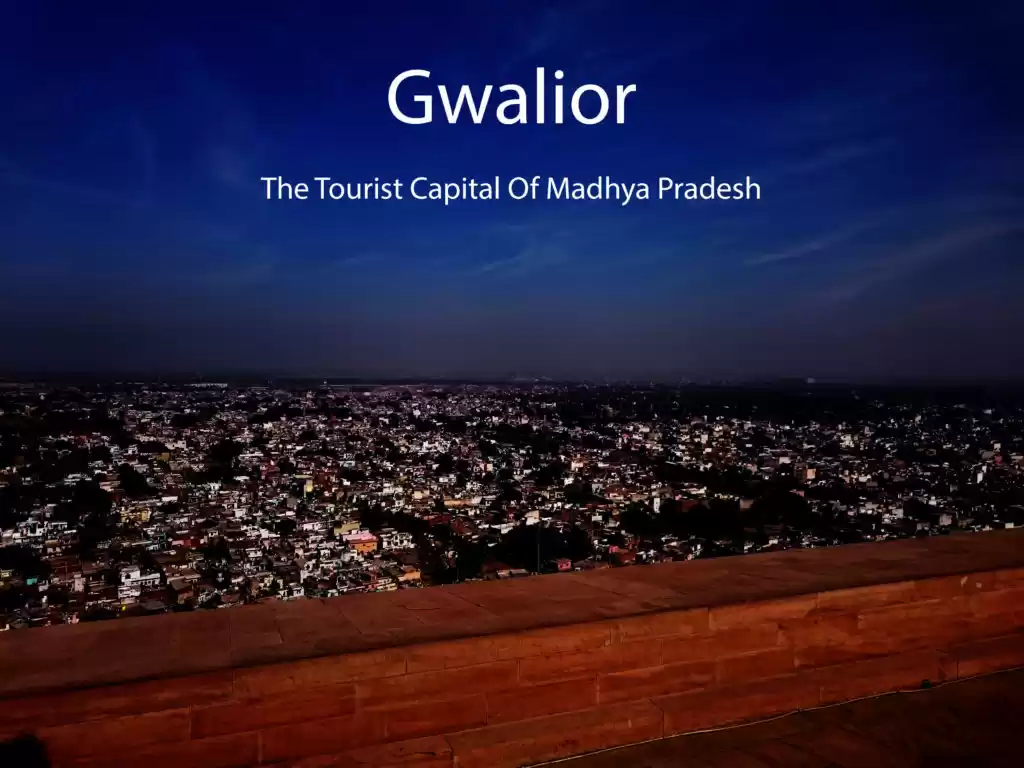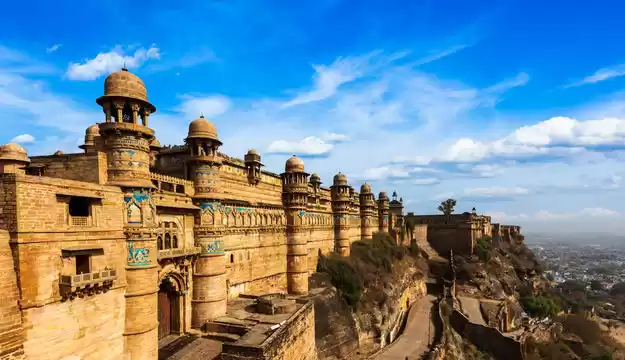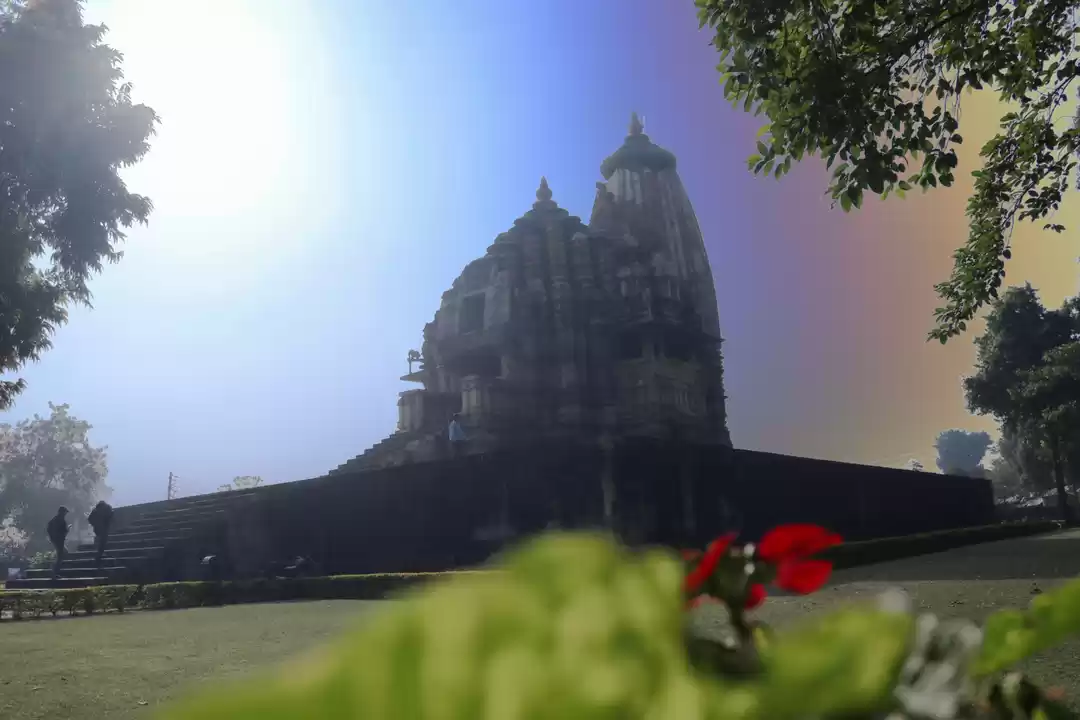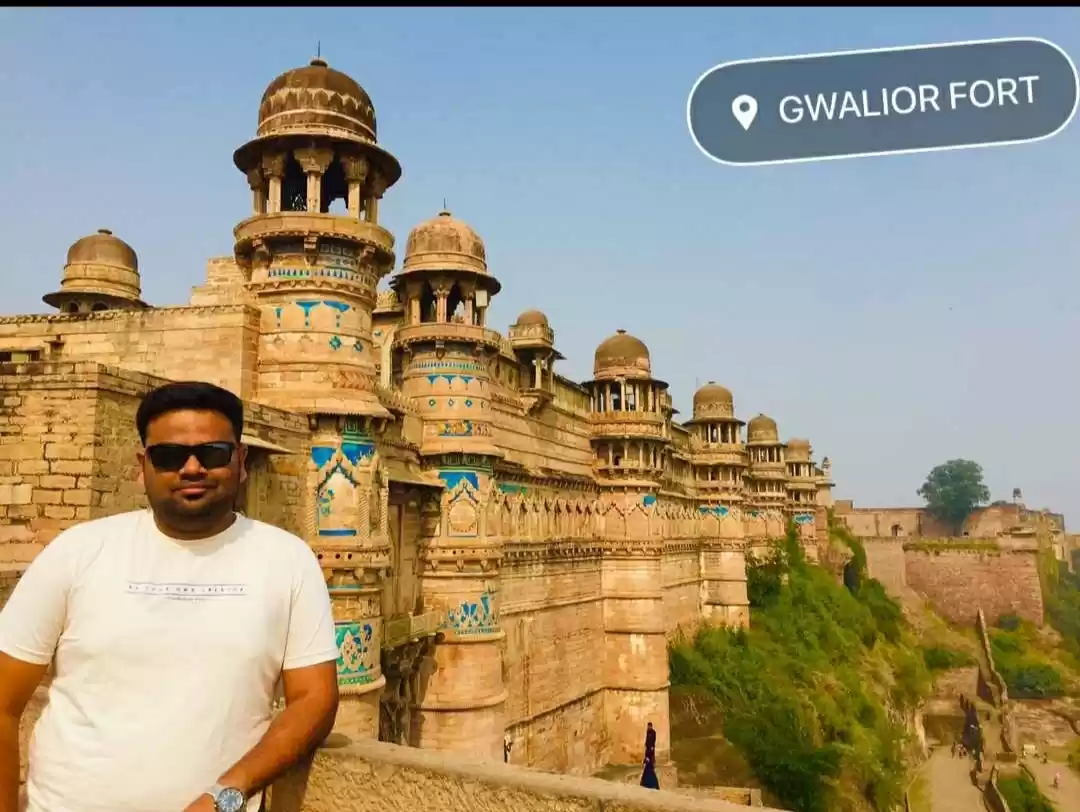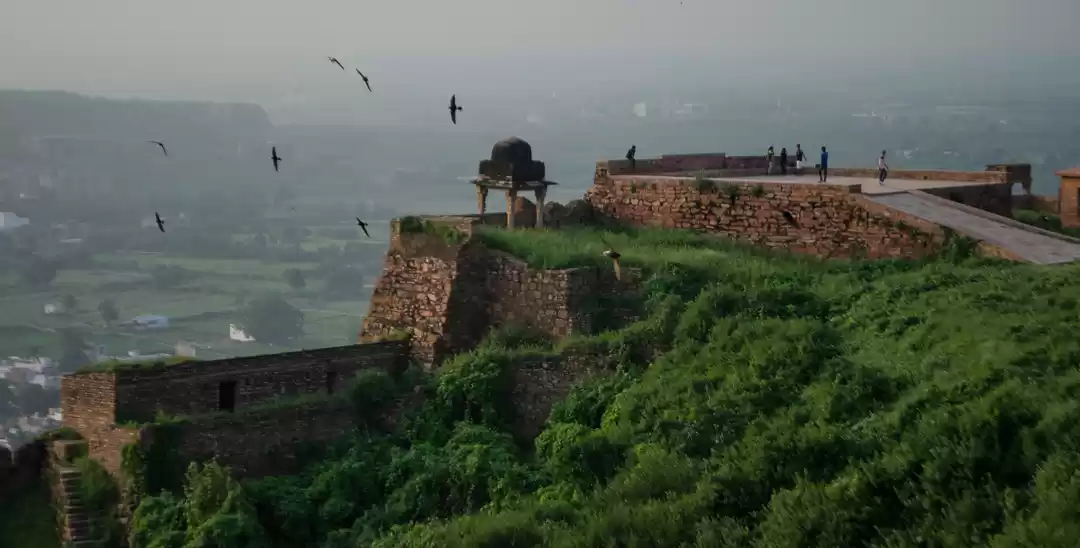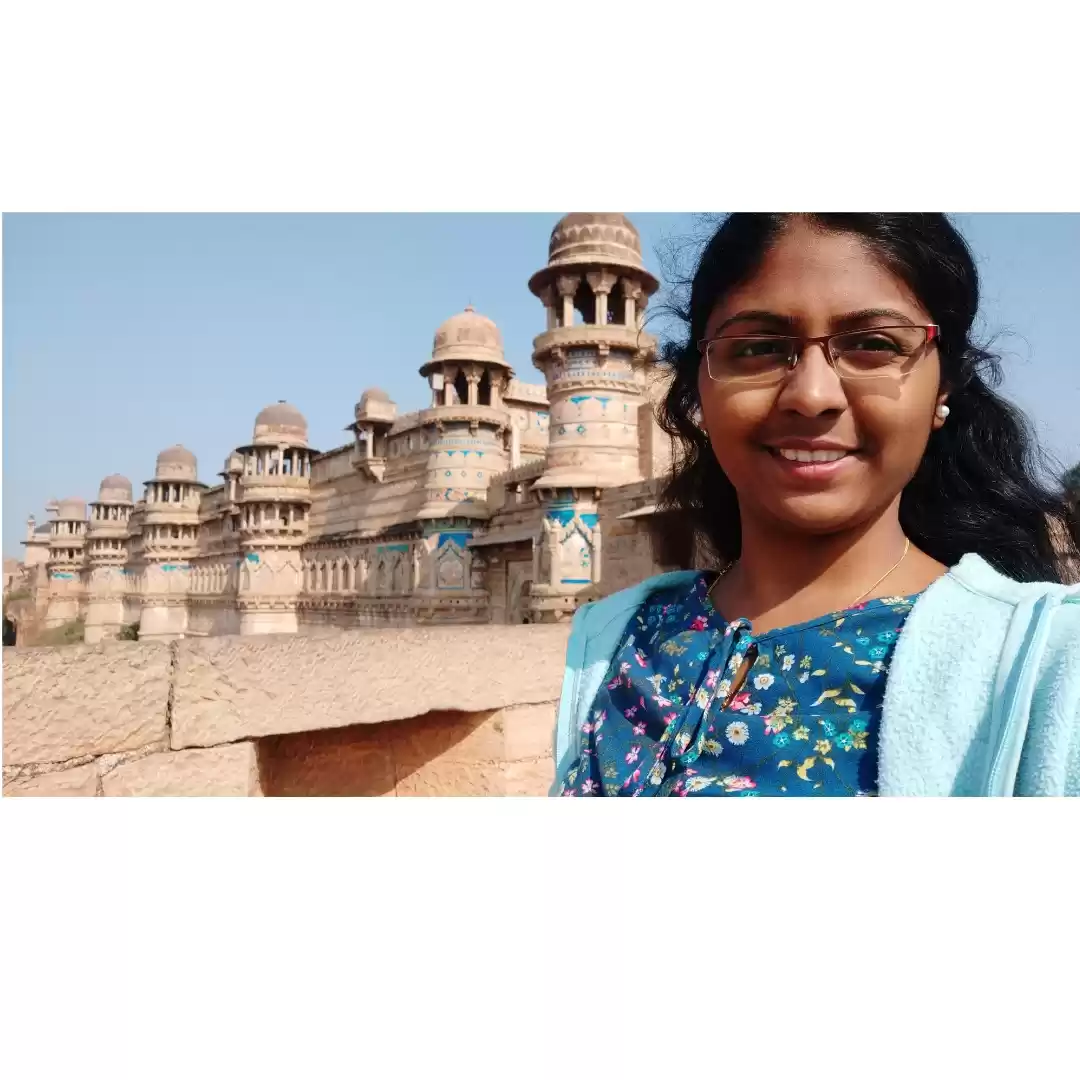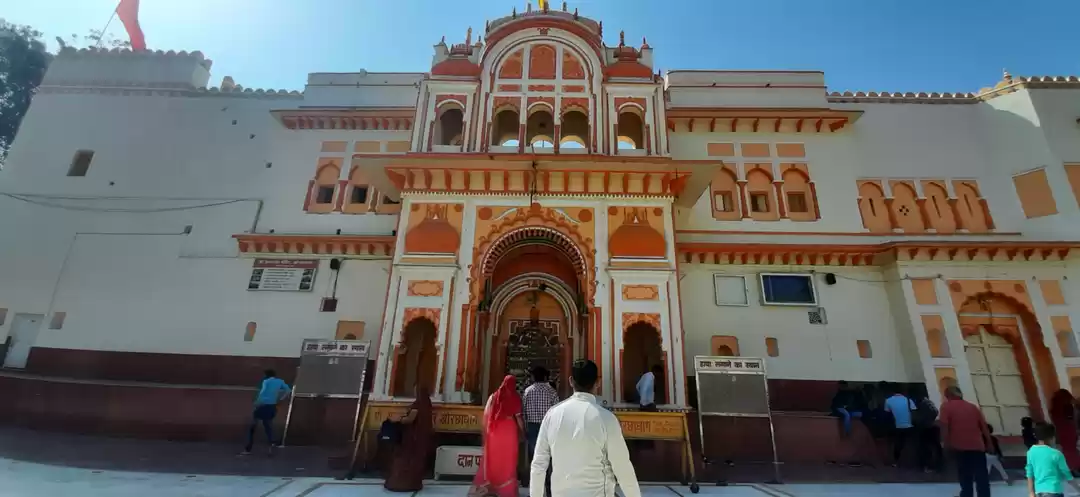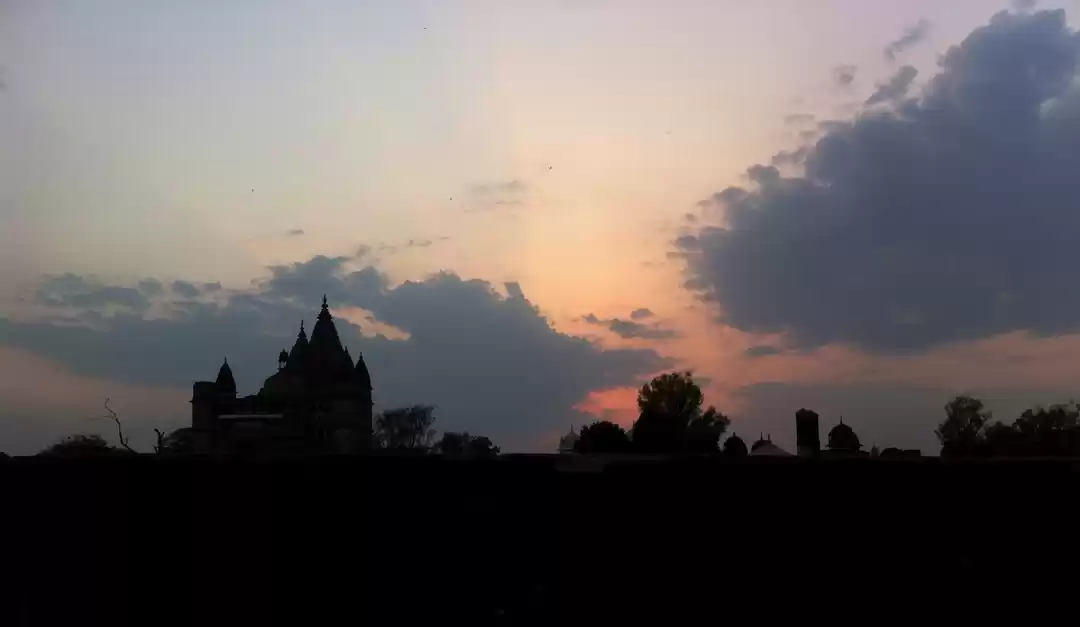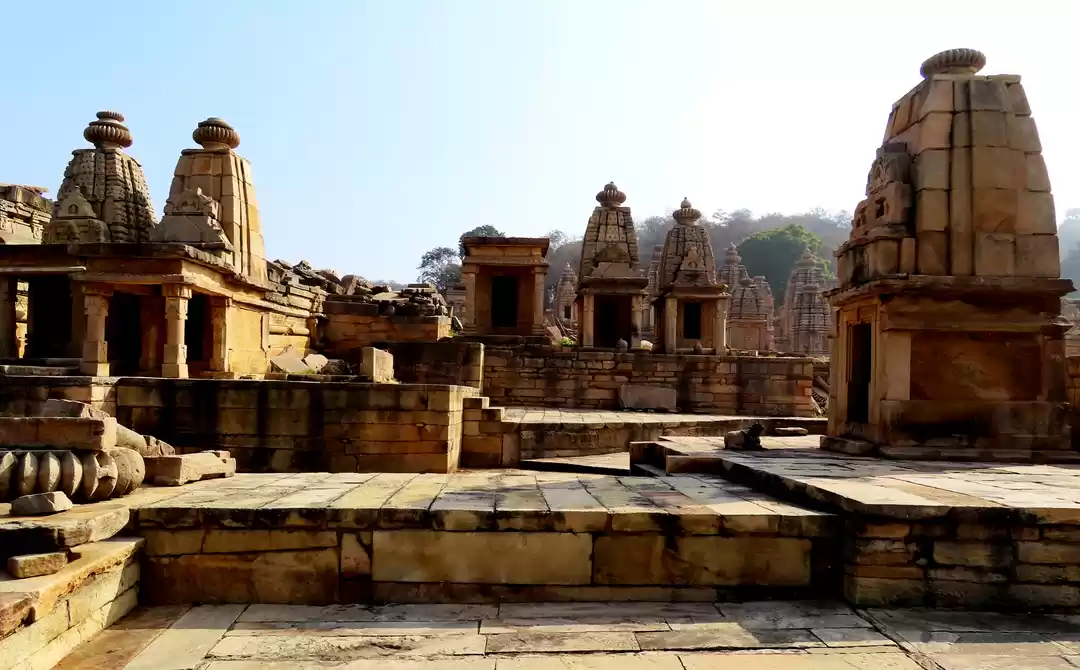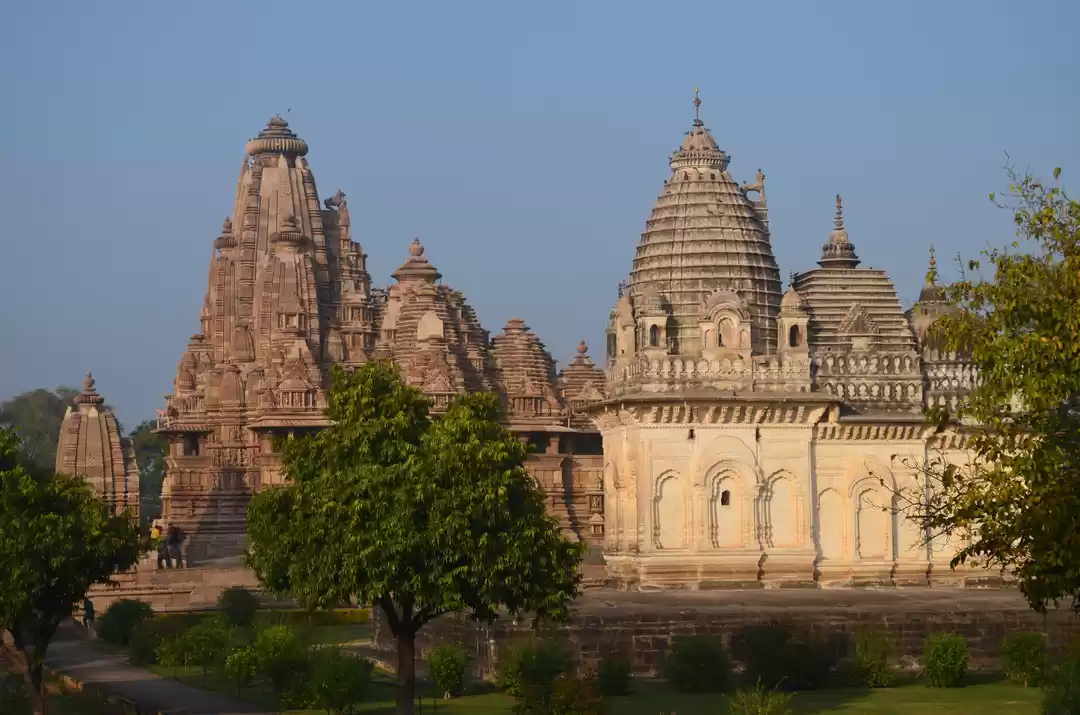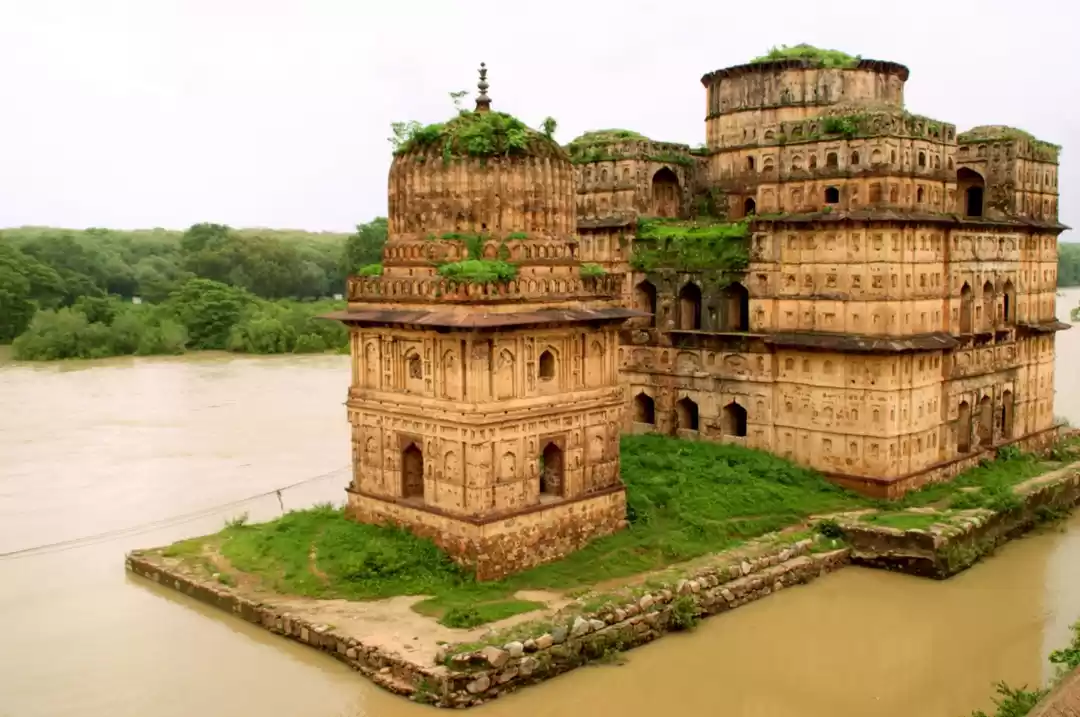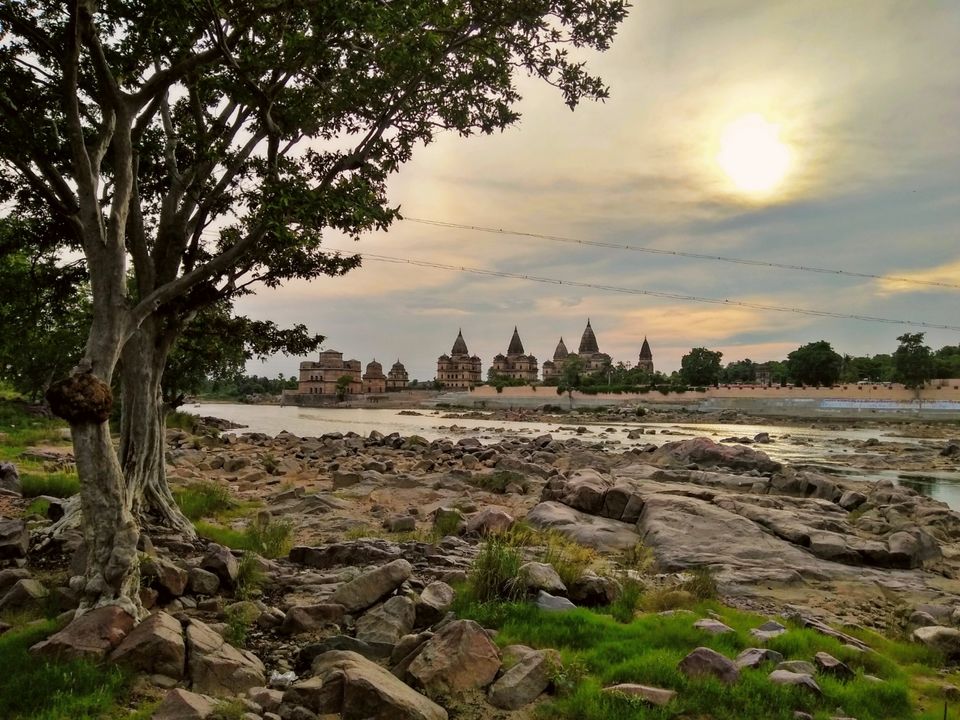
After my November trip to Shillong, I was looking for a job change which forced me to keep my travelling ideas to sideline for quite a long time . Luckily I got a job where am supposed to join in August. After joining also , I can't expect leaves within 6 months. So July was the only option for me to treat myself with a vacation.
As it's monsoon season, I wanted to avoid mountains. So I decided to set my foot to the land of Scindias and Bundels . It was time to turn history pages once more . Along with my mom and dad , we boarded Chambal express which reached Gwalior 2 hrs late and then rested for that night in a decent AC hotel within 800 bucks near the railway station.
Day 1 :-
We started with our first stop to Sun temple. It is an exact replica of the famous Sun Temple of Konark, Orissa and is dedicated to the Sun God. It is one of the newly built temples in the city.

Constructed by G.D Birla in the year 1988, the temple is built with delicate intricacy and skillful hard work. The exterior of the temple is built in red sandstone and the interiors is in pure white marble. The external walls of the temple is adorned with numerous stones carved that depict Hindu gods and goddesses.
From there , we went to the Tomb of Tansen. One of the greatest musicians of India and en eminent vocalist in the courts of Akbar in the medieval period. Tansen was also among one of the nine gems of the Mughal court.

Tansen developed the Gwalior Gharana style of music. He was buried near to his guru, Mohammad Ghaus and this burial site is a beautiful piece of architecture. Annual Tansen music festival is held here every year in the month of November where prominent musicians from all over the country come and perform various classical show
After taking some snaps, we moved on to our next stop towards the Gwalior fort. Referred to as 'the pearl amongst fortresses in India' by Mughal emperor Babur, the Gwalior Fort is one of the most impenetrable fortresses located in the entire northern and southern India.

While entering, you will come across the famous Chaturbhuj Temple.

It is dedicated to Lord Vishnu and is located on the eastern road to the Gwalior fort. Many Sanskrit inscriptions are engraved on this Monolithic temple. Among the inscription is the first recorded representation of zero where it is written as a dot and can be found in the form of a carving inside the temple .
With well-maintained premises, the fort complex includes several temples, palaces and water tanks. The palaces here include the Man Mandir Palace, the Gujari Mahal, the Jahangir Mahal, the Shah Jahan Mahal and the Karan Mahal.
Certain monuments and inscriptions inside the fort explain to visitors that it has been existent since the 6th century. A Huna emperor called Mihirakula used to rule the fort during that time. Later in the 9th century, Gurjara-Pratiharas captured the fort, governed, and also built the Teli Ka Mandir

After being attacked and ruled by a couple of Muslim dynasties for three centuries, the Tomars captured the fort in 1398. Maan Singh was the last and the most distinguished Tomar ruler, and he constructed several monuments inside the fort complex. The beautiful turquoise blue-tiled Man Mandir Palace was built during his reign. And he also had a separate palace built for his wife Mrignayani; this structure is called the Gujari Mahal and is now a state archaeological museum. When Ibrahim Lodi attacked the fort in 1516, he defeated Maan Singh, who died, and the Tomars lost the fort.

The Gwalior Fort then witnessed a brief period of rule by the Mughals, until the Marathas captured it and soon lost it to the East India Company. After this, there were many recurrent shifts between the rule of the Marathas and the Britishers. Finally, in 1844, the Maratha Scindia family of Gwalior, as the British government’s protectorate, occupied the fort.
During the rebellion of 1857, the fort saw great warfare – Rani Lakshmibai (the Queen of Jhansi) came fighting from Jhansi to Gwalior and sought shelter inside the fort. After fighting for days with the Britishers, she jumped from the fort on her horse and sacrificed her life. Until India gained independence in 1947, the Scindias continued ruling the city and constructed a number of monuments.
The fort lies on an area of three square kilometres (1.1 square miles) and has two entrance gates: the main entrance being the Elephant Gate (Hathi Pul) on the north-east side with a long ramp and the other called the Badalgarh Gate on the south-west side. Man Mandir Palace sits on the north-east side.
Teli Ka Mandir and Sahastrabahu (Sas-Bahu) Ka Mandir are the two architecturally rich Hindu temples here.



Gurudwara Data Bandi Chhor is another holy place built inside the fort’s complex, and it was where Sikh Guru Hargobind Sahib was kept as a captive by Mughal Emperor Jahangir. We enjoyed delicious lunch at the langar which is free for anybody.

Toto rides are available to reach Gurudwara Data Bandi, Chhor Teli Ka Mandir and Sahastrabahu (Sas-Bahu) Ka Mandir from the fort. You need to buy the tickets from the ticket counter just opposite to Man Mandir Palace.
Day 2:-
Jai Villas Mahal was our destination for today but unfortunately it was closed. It remains closed on Monday. The Maharaja of Gwalior, Jayaji Rao Scindia, had this magnificent edifice built to ensure a grand welcome for King Edward VII, the then Prince of Wales in 1874. Today, it serves as a residence for the descendants of the royal Maratha Scindia family. The venture cost a total of INR 1 crore, which is likely to have been quite an extravagant affair in that era.
So we went to Gopachal Parvat. You can see here 7th and 15th century rock-cut Jain monuments. The monuments are dedicated to Jain Teerthankaras - Adinatha, Mahavir, Neminatha and Rishanabhanatha - whose idols can be seen in a meditative posture


Day 3:-
If you come to Gwalior, do not miss the famous Kachoris served with varieties of chuttney and trust me those are really delicious .Early morning after having our breakfast ,we left for Jhansi via train which took 2hrs approximately . From there we took auto rickshaw to Orchha. If you reserve the auto, it will cost you 300 bucks or you can share it by spending only 20 bucks per person.
Orchha , meaning ‘a hidden place’ nestled on the banks of river Betwa, capital of Bundela Kingdom was founded in the 16th century by the Bundela Rajput Chief, Rudra Pratap and and is 30 km from Jhansi. It seems frozen in time, with its many monuments continuing to retain their original grandeur even to this day

While entering the village, you will come across two old gates . We stayed at Ramdham Banquets which was near to Laxmi Narayan Temple. It was really hot and humid atmosphere there. We decided to give us little bit of rest. During evening, we went to the bank of the river Betwa. You can view spectacular chattris on the bank of Betwa river.



There are 14 chhatris which are memorials to the rulers of Orchha , grouped at Kanchana Ghat of the river Betwa.

Day 4:-
Next day early morning we started our journey to Khajuraho. It took approximately 4hrs to reach there from Orchha. Khajuraho comes from the word khajur means date palm. Temples belong to the hindu as well as the jain religion. Of the original 85 temples, only 20 have survived destruction and ravages of time.








Built between 950-1050 AD by the Chandela Dynasty, these temples depict various forms like meditation, spiritual teachings, kinship, wrestling, royalty and most significantly, erotic art. The temples consist of stunning displays of fine sculptures and exceptional architectural skill, making them one of the UNESCO World Heritage Sites in India. Based on their geographical location, the temples are categorised into three groups: Eastern, Western and Southern. Beautiful, intricate and expressive, the sculptures of the Khajuraho temples will leave you in awe and wonder
Day 5:-
Today was our last day in Orchha. The most beautiful thing about this ancient village is that you can just walk and cover all temples and fort . You need to have ticket to see all these temples and fort which you can get from Orchha fort entry point.Built on an island on the Betwa river, this architectural marvel houses many temples and palaces. There are three important palaces encapsulating history in its purest form: Jahangir Mahal, Raj Mahal, and the famous Rai Praveen Mahal. The Jahangir Mahal is the supremacy of the architecture that prevailed in Orchha.
The Raj Mahal is one of the most historic monuments in the fort. Rai Praveen Mahal which once was beautiful now is left with stories of the glorious past in its ruins


LakshmiNarayan Temple is one of the three most important temples in Orchha, offering a perfect and unique mix of fort and temple architecture. The fascinating thing about this temple is that despite its dedication to Goddess Lakshmi, there is no idol of the Goddess kept inside.



LakshmiNarayan Temple was built by Vir Singh Deo around 1622 but inadequate maintenance brought down the magnificence of the temple. It was reconstructed around 1793 by Prithvi Singh and brought it back to its glory.
Next was Chaturbhuj Temple, built by Raja Madhukar in between 1558 and 1573, is one of the oldest architectural marvels of the Bundela time in the town.The temple is dedicated to Lord Vishnu , giving the temple the title of Chaturbhuj and houses an idol of the Lord with four arms.

Next was Ram Raja Temple. This place has a charming legend attached to it. Following the dream visitation of Lord Rama , Madhukar Shah 's wife Ganesh Kunwari brought a statue of Lord Rama from Ayodhya to Orchha. The image was placed in a palace prior to its installation in a temple. when the idol proved impossible to move , the queen recalled, too late , the deity 's edict that the image would remain in the place where it was first placed. It is only place in India where Rama is worshiped as a king.

Next day we bid good bye to this beautiful ancient place and reached Jhansi to return Kolkata. Monsoon and winter are the best time to visit this part of the country.
I still have some unfinished buisness in Madhya Pradesh and will surely return soon to get surprised by the beauty of this state.















